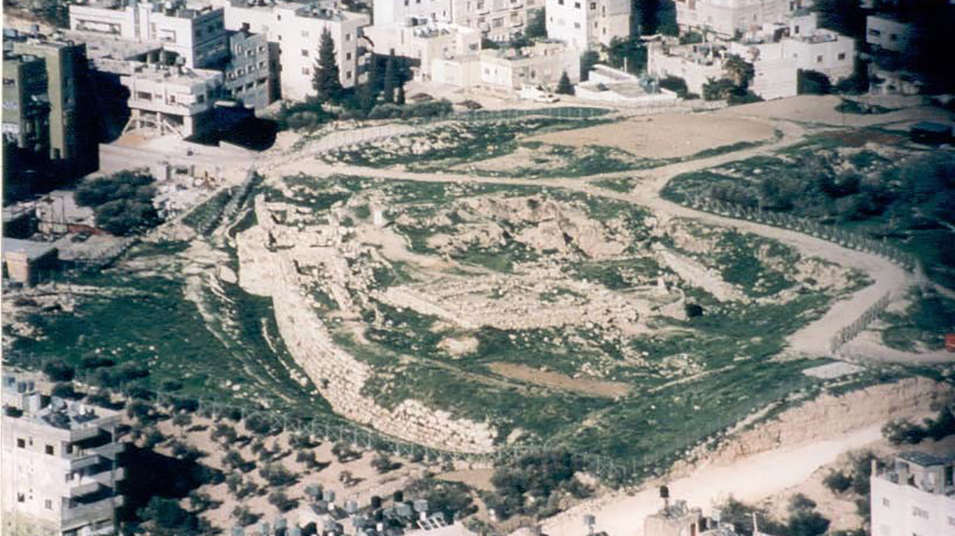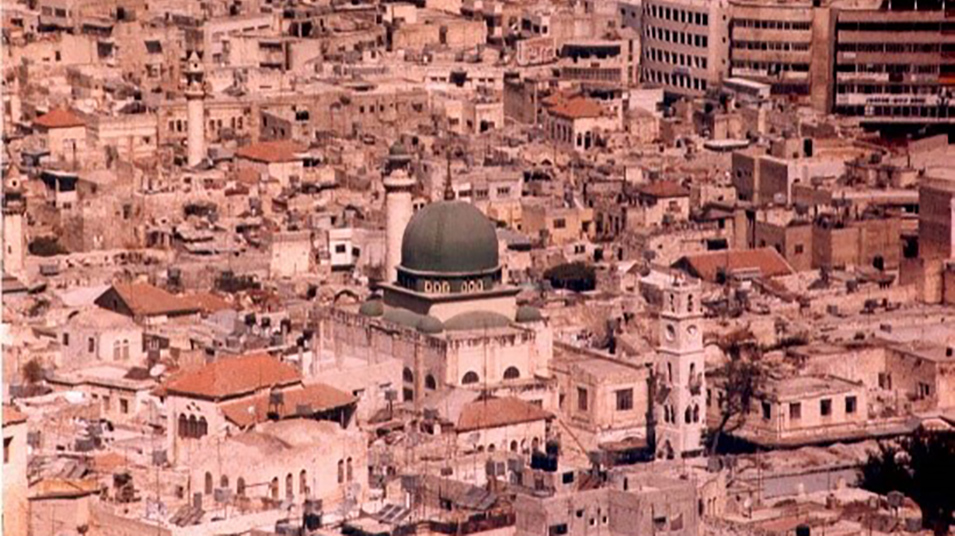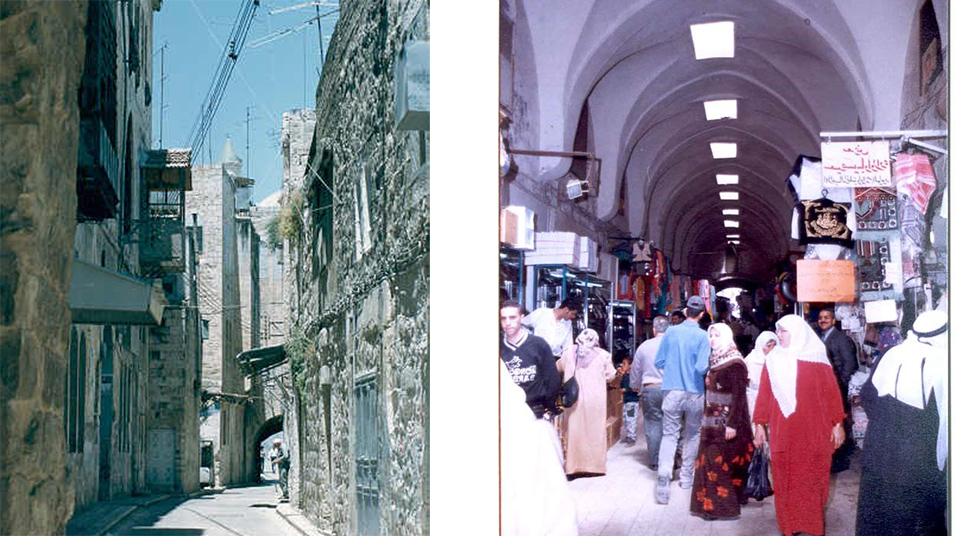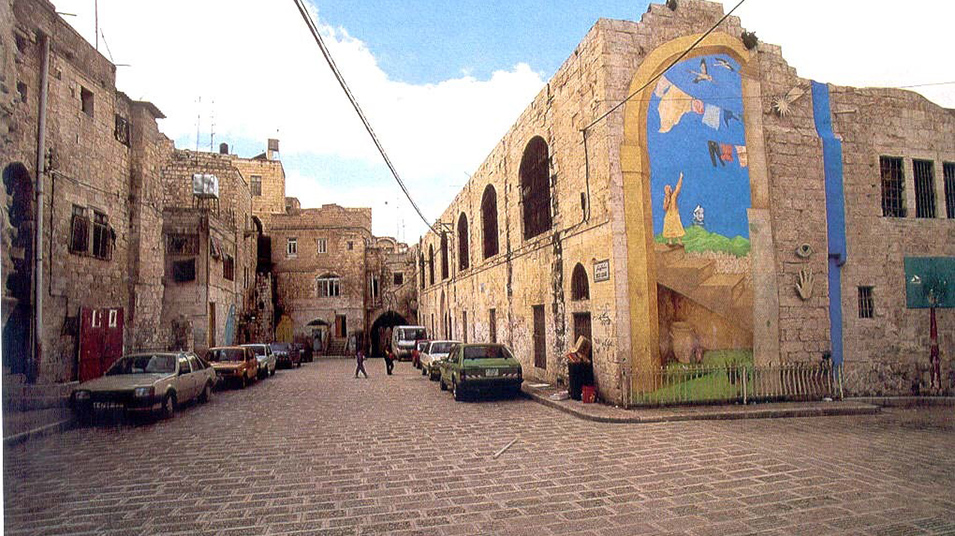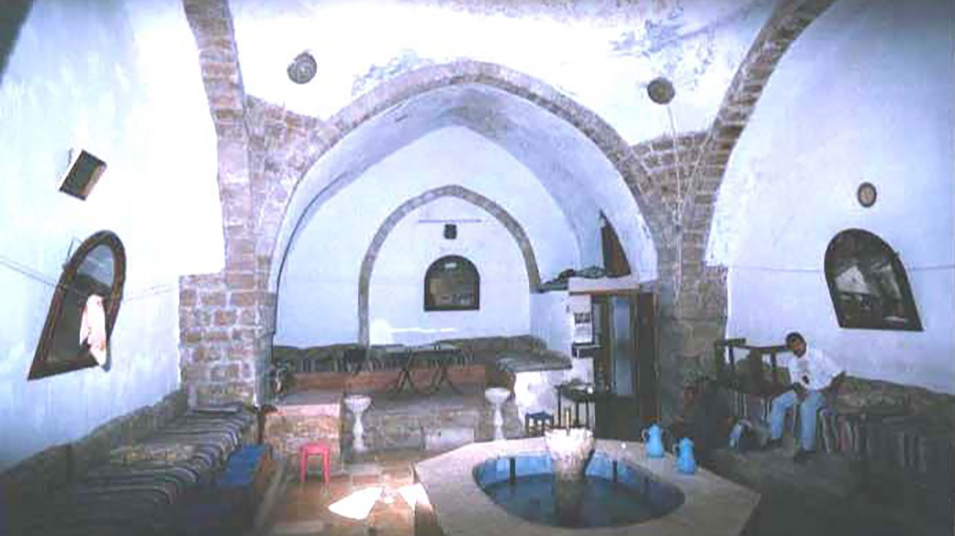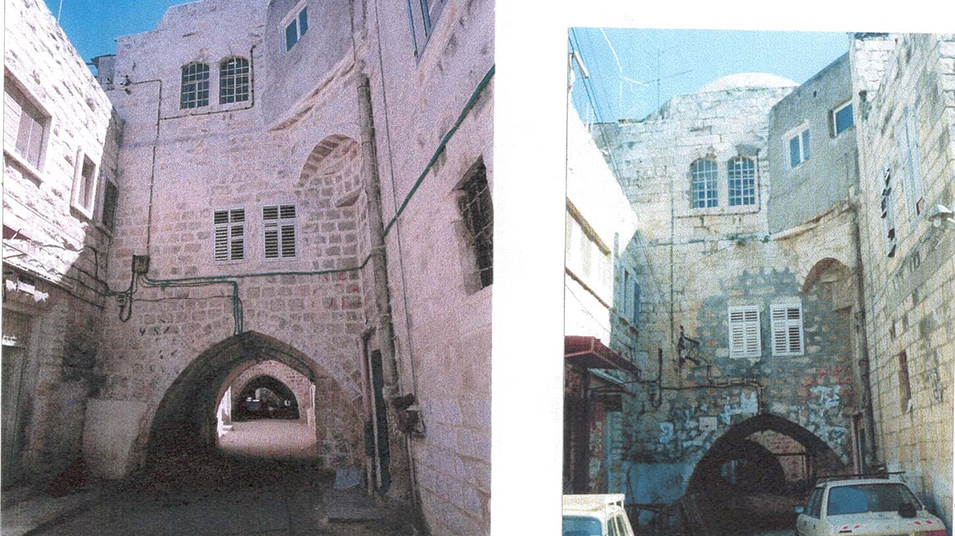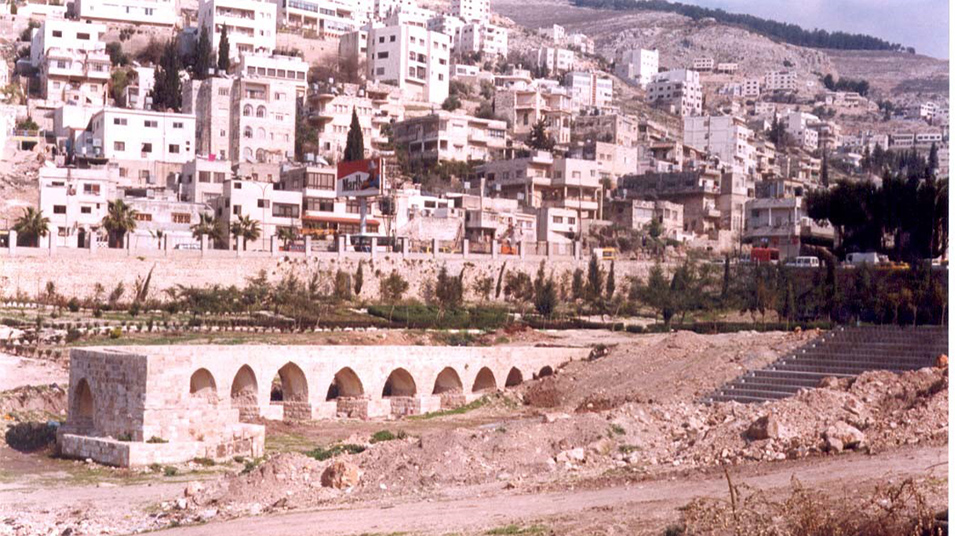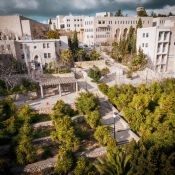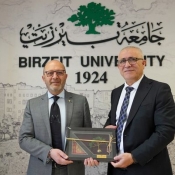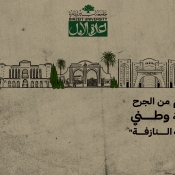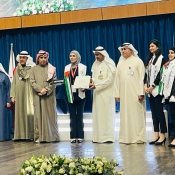Nablus selected as INNOMED-UP project pilot area/2
The city of Nablus has a population of 170,000 people. It’s considered the second largest commercial and cultural center in Palestine after Hebron. The city of Nablus, and especially its historic center, which was founded in the early 72 A.D. by the Flavian ruler Vespasian, the Roman emperor, after the destruction of Shechem Town (The Canaanite town of Shechem developed, starting from the 4th millennium B.C. and the first real building dated in Middle Bronze “around 1800 B.C.”, and the area in the eastern part of Nablus, which is known as Tal-Balatah, is identified as ancient Shechem )(Fig2.1). The city of Nablus was named Flavia Neapolis (Neapolis: new city, from which the present name is derives), in honor of the Emperor Flavius Vespasiano. The city of Nablus lies in a spacious valley between two mountains, Mount Ebal (940m above sea level) in the north and Mount Gerizim (881m above sea level) in the south.
On the Madaba map (Jordan) Neapolis appears as a large city surrounded by a wall with a gate on the east side, a colonnaded street that runs through the centre of the city, the basilica at the centre, the theatre on southern side beside the wall, and the Aqueduct of Al-Qarion on the south-west side of the city (Fig2.11). Nablus was also represented on another mosaic at Um-ar-Rasas in Jordan (Fig2.12)
The Nablusian society consists of three communities, divided according to their religions. The Muslims, who form the majority of population, the Christians who belong to the Greek Church, Roman and Protestant church and finally, the Samaritans who are “the oldest and smallest sect in the world,”. A very small number of Jews used to live in Nablus till the first decades of the last century.
In the early history of Nablus, the population and its buildings were concentrated in the area surrounding the an-Nasr and the Al-Kabir mosques. This area is known as the heart of the historic city “The Qasabah”. Within the walls of the Qasabah lies sumptuous array of picturesque lanes, arched passageways, centuries-old masonry, antiquities, Turkish baths, bazaars, workshops, mosques, khans, and soap factories. All these buildings were built of local building material, mainly lime stone brought from the near caves of Mount Gerizim and Mount Ebal (Nablus Municipality Master Plan, 1995: 34). The historical centre of Nablus covers a total surface area of 270 Donums and has more than 20.000 inhabitants.
The fabric of the historical center presents specific characteristics of considerable variety and archaeological remains of considerable importance, (among which many traces of the Roman city). Moreover, we can find important buildings that include the palaces of the aristocratic families. There are also numerous mosques, often built over pre-existing Christian religious edifices, among those are Jami an-Nasr (rebuilt in 1935) and Jami Al-Khadrah, the “Green Mosque” of the Mamluk period. Public baths, of which only two are still in operation; and the traditional soap factories complete the cityscape.
The essential characteristic of the historical center is the Arab “Medina” with its typical superimposition of varying building typologies and destinations, and a close-packed network of streets that decrease in size as they branch away from the main thoroughfare and which sometimes lead to dead ends.
The INNOMED-UP project is funded by the #EU under ENI CBC Med Programme to the support of the EU/Programme
#INNOMED_UP #INNOMED_UP_Mediterranean#upcycling_INNOMED_UP #CircularEconomy #Circular_Economy #EU#Mediterranean #ENICBCMED

